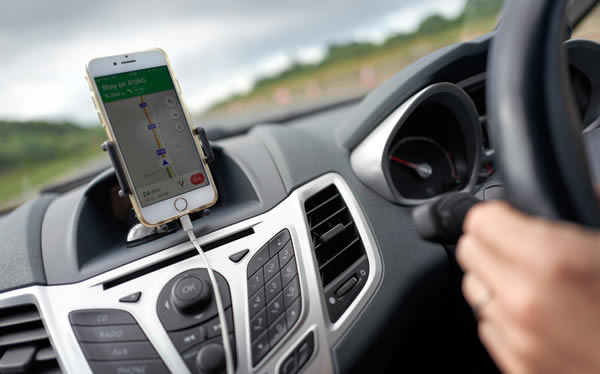
Cars have come a very long way since their inception in the late 1800s – and in recent years, motoring technology has progressed significantly and even more rapidly. These advances are designed to help and enhance your driving experience and safety – but sometimes they can do more harm than good.
One of the unofficial yet key aspects of any new driver’s training is eliminating and dealing with distractions – concentration is key, so addressing the downsides of in-car technology is important, especially for younger students and those who have recently passed their test.
What is in-car technology?
Your vehicle is now so much more than a simple engine on a chassis with four wheels. Now, our cars contain more added features than ever before, depending on their age. Wireless communications and entertainment streaming systems, built-in information and navigation and even apps – all available at your fingertips whilst driving. These make driving a more pleasant and enjoyable experience, offering the ability to listen to your favourite music, chat with friends and even stream shows for passengers.
Built-in technology does vary from car to car. If you have an older vehicle, it’s less of a problem as they tend not to have the same features as newer cars. Most modern vehicles (made within the past 3-5 years) include multi-media touch-screens as standard, featuring varying levels of features from simple functions within the car to media streaming, infotainment systems and automation.
Common examples of in-car technology include:
- Security features such as immobilisers, trackers,
- Cameras for manoeuvring, safety and security
- Navigation features including maps, sat-navs and GPS location monitoring
- Communications
- Multi-media such as music, radio, video and smartphone pairing
- Information on surrounding objects and events
Even Microsoft Teams is now being included in vehicles – so drivers can ‘take meetings on the road’. But is this a good thing when the only thing you should be thinking about or focusing on as a driver is the task at hand?
How can in-car technology cause distraction?
Although in-car technology is designed to be helpful or enhance your driving experience, it can also be distracting and in turn, dangerous. Focusing whilst driving is crucial – you’re in charge of large, heavy machinery which is capable of killing or seriously injuring you or someone else if misused. Once we’d warn students about common distractions such as passengers and external events, fiddling with the radio, a mobile phone. Now the distractions are built-in to the fabric of the vehicle you’re driving.
In July 2022 the LA Times ran a viral article covering the dangers of in-car distractions. Covering various aspects of new technology in vehicles, the article pointed out that even back in the 1980s, the US Army identified a significant risk to Apache helicopter pilots who experienced cognitive overload due to the vast amount of information they were being exposed to when flying. Cockpits were then redesigned with maintaining focus in mind.
Is automation the answer?
More modern car manufacturers are including automation within their standard models – features such as auto steer or auto pilot, spatial sensors and parking. Most people think that automation makes cars safer – but research consistently shows that the opposite is true. Once drivers know that they have the ‘back up’ these features provide, they tend to become more complacent, inattentive and less focused. Features such as cruise control and even automatic driving could actually be lowering safety rather than enhancing it. As these systems aren’t failsafe, there’s never a substitute for driving with focus and adequate attention even when taking into account human error.
Studies have shown that some models and manufacturers perform better in the safety stakes than others – some touch screens are less sensitive for example, taking drivers’ attention away from the road. Although there are increased calls for manufacturers to take more responsibility for safety concerns, drivers should be aware and alert at all times.
Staying focused whilst driving
The best advice is the guidance we as driving instructors have been giving for many years – stay focused, alert and aware at all times when driving. If you find that a touch-screen or other in-built media are becoming distracting as you drive, you may be able to switch the screen off or disable the features that affect you the most.
Other useful tips include:
- Get organised and plan your route before leaving. Don’t rely solely on your sat nav and be sure to stop and check your route rather than attempting to use the sat nav when driving
- Put away your electronic devices, such as mobile phones
- Don’t multitask when driving – this includes changing music, texting, adjusting settings in the car and phone calls (even hands-free phone calls can be distracting)
- Avoiding eating and drinking when driving
- Avoiding smoking
- Avoiding driving when tired, unwell or upset